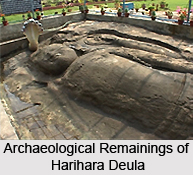 Harihara Deula referred to as Twin Temples is located close to the bank of Mahanadi River in Boudh district in the Indian state of Orissa. The temple situated in the village named Gandharadi is dedicated to Lord Shiva and Lord Vishnu.
Harihara Deula referred to as Twin Temples is located close to the bank of Mahanadi River in Boudh district in the Indian state of Orissa. The temple situated in the village named Gandharadi is dedicated to Lord Shiva and Lord Vishnu.
Architecture of Harihara Deula
The 10th century stood as the witness to the construction of the religious edifice, Harihara Deula. The temple, built by the Somavamsi Kshatriya Kings, stands as an illustration of the Kalingan style of architecture. The pilgrimage centre dedicated to Shiva and Vishnu marks the harmony between Shaivaite and Vaishnavite cults. The central vimana of the temple confirms to the rekha deula order while the Jagamohana is flat roofed.
The Siddhesvara Temple located within the temple complex is dedicated to Lord Shiva enshrining a Shivalinga within a circular yonipith. Another shrine, Nilamadhava Temple houses an idol of Lord Vishnu carved out of a black chlorite. The idol possesses four hands holding weapons.
Harihara Deula is located close to Boudh. Buses are easily available from Bhubaneshwar, Subarnapur and Berhampur for Boudh.
This article is a stub. You can enrich by adding more information to it. Send your Write Up to content@indianetzone.com





















